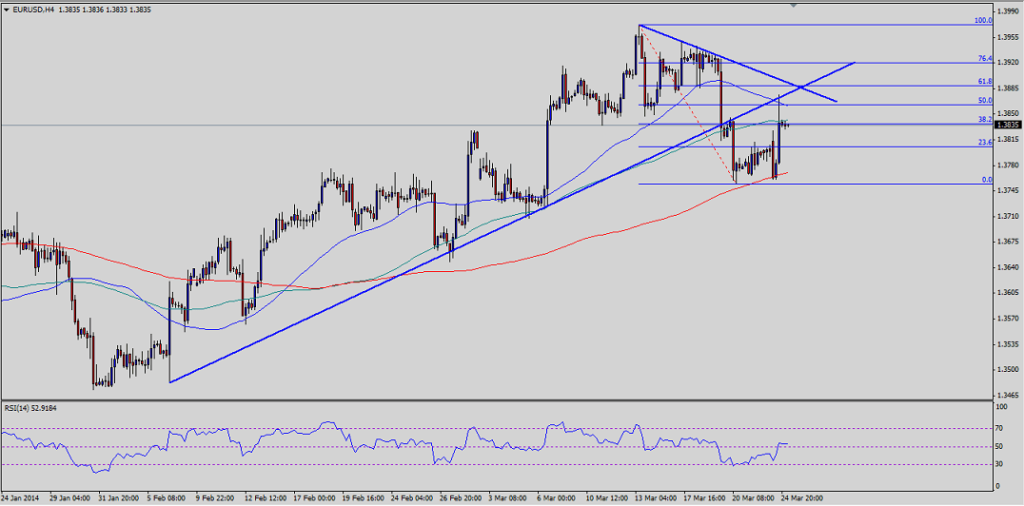Yesterday, in the European session at GMT 09:00 AM, the Euro zone manufacturing and services flash purchasing manager indices (PMI) were released by the Markit Economics.
The aggregate numbers for March were pretty much in line with the expectations, and declined to 53.0 from 53.2. The report supported the story of slow but stable economic growth, and highlighted the reasons for a 3-month low.
Eurozone Manufacturing PMI
The report suggests that manufacturing output and new orders both increased for the ninth successive month, and continued to enjoy its strongest spell of growth. There are possibilities that the growth could pick up in April, which is a positive sign. The highlight of the story was the change in output and new orders for France, which returned to growth in March, as manufacturing PMI posted a massive gain from 47.9 to 51.6. This is the sharpest rise in 31 months. The other side of story was slow output growth in both manufacturing and services for Germany, registering a 4-month low of 53.8.
The surprise from France was cheered by the market, and a sudden jump in EURUSD was registered, but the deterioration in Germany halted the rise in the pair. The decline in EURUSD was limited, as the report suggested that the rate of growth activity may stabilize in April.
US Manufacturing PMI
At GMT 01:45 PM, the Markit Economics released the flash purchasing manager indices (PMI) for US. The manufacturing PMI for US dipped from 45-month high recorded in February (57.1) to 55.5. The decline was sharp, but one cannot overlook the fact that growth is still healthy, as the business conditions continue to improve. The best part of the report was the increase in employment suggesting stronger growth seen on average. The Chief Economist at Markit, Chris Williamson mentioned in the report that “the manufacturing PMI adds to evidence that the sector has shrugged off the weather-related weakness seen earlier the year, with strong demand encouraging firms to expand and hire new staff at a robust pace”.
The growth in the sector was not as strong as February, but that doesn’t mean output and new orders declined heavily in March, and would discourage Fed to re-analyze the situation for reducing its asset purchases.
Most majors climbed post the release. EURUSD and AUDUSD were the biggest gainers in the US session. EURUSD rose to 1.3874 and AUDUSD climbed towards the 0.9150 level.
Technical Analysis
EURUSD fell to 1.3760 in the European session yesterday after a failure around the 1.3820/30 levels. However, the pair later recovered most of the ground, and bounced sharply in the US session to trade above the 1.3850 level. EURUSD buyers failed to push the pair above the 1.3870 level, which represents a triple confluence zone. 50 moving average, 50.0% retracement level of the last leg lower from the 1.3972 high to 1.3756 low and the broken 4 hour bullish trend line sits around the same zone.
The pair as of writing is trading below the 100 MA on the 4 hour chart, and if 200 MA continue to provide support to the pair, then chances of a renewed uptrend in the short term might improve. The Euro bulls need to take out the 50 MA, and down-move trend line connecting last major highs in order to accelerate higher.

